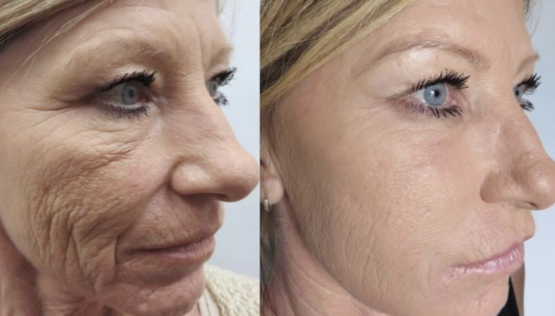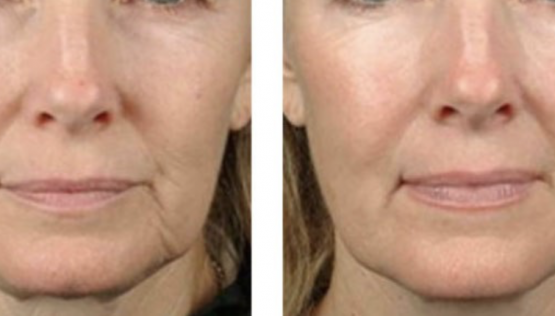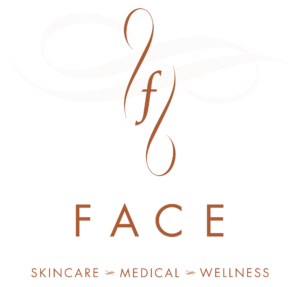The Plasma Facelift uses Injectable PRP as the most natural filler you can use for fine lines, texture, scars, overall rejuvenation, hair loss, and more. PRP is made of your own plasma, which contains growth factors that stimulate your own collagen and elastin production. PRP doesn’t have the risks associated with other fillers, and you have a lot of product to be able to get many areas at once, making this the product of choice for many people. The treatment lasts for up to two years and can complement other fillers for more volume, and laser treatments for more rejuvenation. We use the next generation PRP, called Selphyl® PRFM.
PRFM is next-generation PRP. By converting PRP to PRFM through calcium chloride, growth factors can be sustained for hours, not just minutes (where many stem cells can be lost upon the start of treatment). With the more therapeutic dose of pure gold PRP. the proprietary gel separator ensures no contamination of white blood cells and red blood cells mixed in- which have inflammatory and catabolic effects. Close to body PH, it is gentle, whereas others are acidic and can burn going in. The PRFM increases skin thickness by 10-12%.
PRP uses your own plasma from a blood draw, whereas other fillers are from hyaluronic acid, calcium, or other made substances. PRP helps more textural issues and usually takes multiple sessions, but gives a lot of injectable solution per treatment for the cost, whereas fillers use smaller amounts and may take fewer sessions as it volumizes the tissue more.
Platelet Rich Plasma (PRP) procedures are not approved or disapproved by FDA because PRP is not a drug. The FDA has approved the PRP kits that are used in the platelet collection process and they have been deemed safe. PRP has always shown to be safe and is effective at rejuvenation and healing.


PRP use is safe for most individuals. There are very few contraindications, however, people with the following conditions are not candidates:
To help prevent bruising stop taking aspirin one week before your injection. Three to four days prior, stop taking any fish oil, vitamin E supplements, Advil, Aleve, Motrin and other NSAIDs. PRP contains platelets and signaling proteins. The Platelets contain growth factors that signal your body’s “stem-cells” and facilitate regeneration of your collagen, elastin, blood vessels. The PRP is absorbed in a few days, however, the signaling continues to “work” recruiting stem cells and repair proteins to come to the site of injection to heal and regenerate. Activated platelets create a scaffolding of growth factors and stem cells to regenerate the tissue – including blood supply. The effects start immediately and are still working beyond 12 weeks. Annual PRP injections are helpful to address the normal ongoing cellular degenerative aging process.
PRP tends to last and look better 18 months to 2 years. On the other hand, HA fillers tend to break down quicker and diminish over time.
It takes 72 hours for all the growth factors to be released into the tissue being treated. For any discomfort, you may take Tylenol immediately.
Certain factors (ie, smoking and alcohol intake) diminish stem cell release. Avoiding these will increase the success of any PRP procedure.
Platelets work by causing an inflammatory reaction. If this inflammatory reaction is diminished, the clinical outcome may be compromised. For this reason, the use of anti-inflammatory drugs before and after the procedure is not recommended. We recommend that you do not take NSAIDS or Steroid medications for 1 week before the procedure and 2 weeks after. You may take Tylenol for pain or discomfort both before and after without diminishing PRP effectiveness.
Adverse effects are rare. Some of the potential side effects of Platelet Rich Plasma include:





Now Serving Oakland County
FACE Skincare Medical Wellness is located in Bingham Farms, MI, and serves patients in Bloomfield Hills, Farmington Hills, Birmingham, Franklin, Northville and throughout the Detroit metro.
Monday, Friday, Saturday: 9am – 5pm
Tuesday, Wednesday, Thursday: 9am – 7pm
© FACE Med Spa PC 2024 | Privacy Policy | Trademarks
Total Rating 4.8 out of 5 based on 147 reviews
MODERN LIFT
– our proprietary approach to tighter, younger, and more full skin –

Ask about our monthly Beauty Maintenance Membership